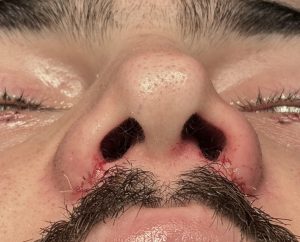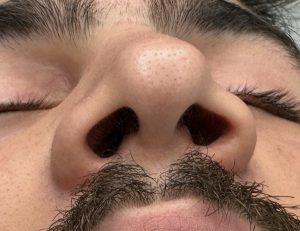The nostrils are essentially the only non-osteocartilaginous part of the nose that can be surgically modified. While the lower alar cartilages do provide some structural support this is closer to the tip than the nostril base. The lateral or base of the nose is composed only of soft tissues regardless of how wide or narrow it is.
While nostril narrowing is most commonly done as part of a rhinoplasty, usually the last step in the procedure, there are instances when patients request it as an isolated procedure. The goal, of course, is that they want smaller or less wide nostrils. The first question is always whether their wide nostril concerns are at rest or only when smiling. In other words is this a static or dynamic problem? Surgery is most effective for static concerns (what structures look like at rest) as opposed to dynamic problems. (Only seen when smiling)
While there are numerous techniques for nostril narrowing they really come down to the location extent of the excision pattern. An internal approach, often called a sill alarplasty, takes as wedge of the nostril at the sill-nostril base junction. While it has a more hidden scar it’s effects are limited to reducing the width of the nostril base as defined by the bialar distance. This will reduce nostril flare somewhat but not as significant as wedges albeit with more external scar.

While the scars between eternal vs internal nostril narrowing are different and are their own consideration the balance between tip and nostril width from the submental view is also an important aesthetic issue. Scars can be revised but too much nostri width reduction can not.
Dr. Barry Eppley
World-Renowned Plastic Surgeon




